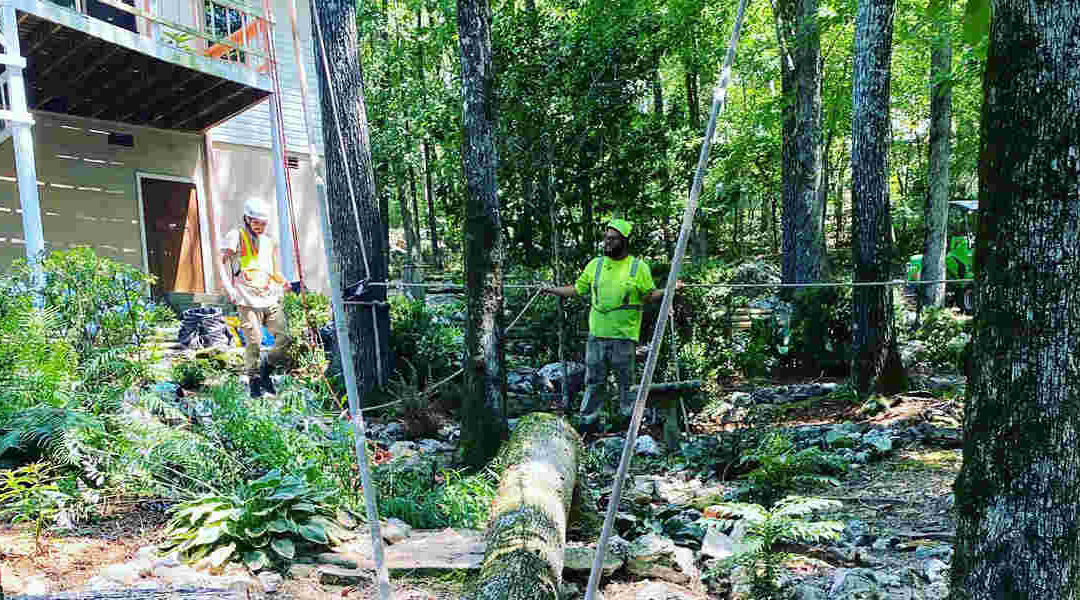While trees tend to be very strong, they sometimes need additional support to stay healthy. Arborists may use cabling and bracing to do just that. What is tree cabling and bracing, and what materials do we use when doing it?
You can rely on Urban Jacks Tree Service for licensed tree cabling and bracing services across Arkansas, including Rockwell, Arkadelphia, and Hot Springs. Our industry-leading arbor care can help the trees in your yard thrive. Read more to learn the basics of tree cabling and how bracing can help your tree.
Why Would a Tree Need Support?
Arkansas’ humid, subtropical climate doesn’t usually have excessive snow in the winter. However, Arkansians must watch for flooding during the spring season due to heavy rains and water levels in lakes and creeks. Potential droughts and tornadoes coming up from the warm fronts in the Gulf of Mexico can also affect them.
Moreover, trees in residential and commercial areas deal with nearby infrastructure, meaning the root system cannot expand as deeply as the nearby foliage. Many wild trees also have a much larger canopy and root system than their domestic neighbors, taking up more resources.
Therefore, your trees could have weaker trunks, roots, branches, and more.
The Use of Tree Cabling and Bracing
So then, what is tree cabling and bracing, and how can it help?
Trees spread out various branches, some of which can become weaker and heavier. If they break off, they could harm the whole tree through physical damage and exposure to the elements.
Certified arborists find these weaker but otherwise necessary branches and attach them to a sturdier part of the tree. Doing so gives the branches more support.
Cabling and bracing are similar practices, but they use slightly different materials:
- Cabling: giving weakened branches additional support via semi-flexible steel support cables
- Bracing: using firm steel rods with less mobility but enhanced support in more desperate situations
Both options tend to work better than staking. With staking, you put stakes in the ground and attach strings or ropes to the trunk to keep the tree – usually a sapling – stationary.
Why You Should Call an Arborist
What is tree cabling and bracing, and how can it be that difficult to DIY?
#1. Tree Knowledge
Professional arborists learn tree care science for optimal tree health. For example, when you call an expert to trim or prune your tree, they choose which parts of the tree can go using minute signs from the tree. The general person wouldn’t know what to look for or how to find those signs.
#2. Tree Care
You also don’t want to damage the tree while trying to help it. While you can expect some tree sap to come loose during general procedures, you don’t want to damage the tree so much that it can’t recover. An inexperienced person trying to cable or brace the tree could cause irreparable damage, killing the tree over time.
#3. Your Security
Your arborist should have up-to-date licensing and insurance to protect you, themselves, and nearby property while under their care. That way, you don’t need to take the financial fall in case of any accidents you didn’t cause.
Contact an Expert Arborist Today
Urban Jacks Tree Service leads the pack on tree care and maintenance in Arkansas. We’re your go-to experts whether you need to schedule a tree removal or you’re learning what you need to know before hiring tree services. What is tree cabling and bracing but a simple yard care solution with us on your side?
For top-quality tree assistance in and around Hot Springs, Arkansas, call (501) 494-1363 today!

